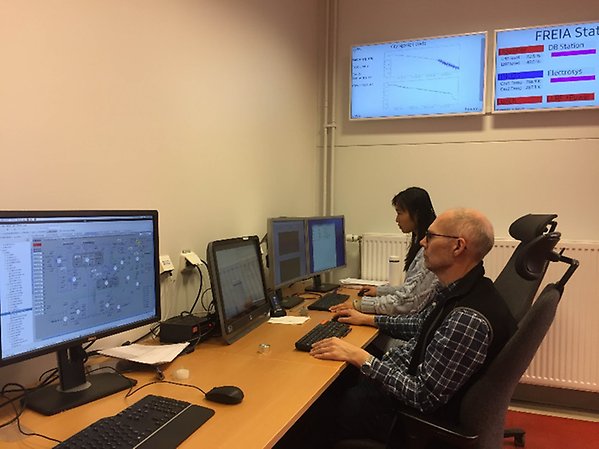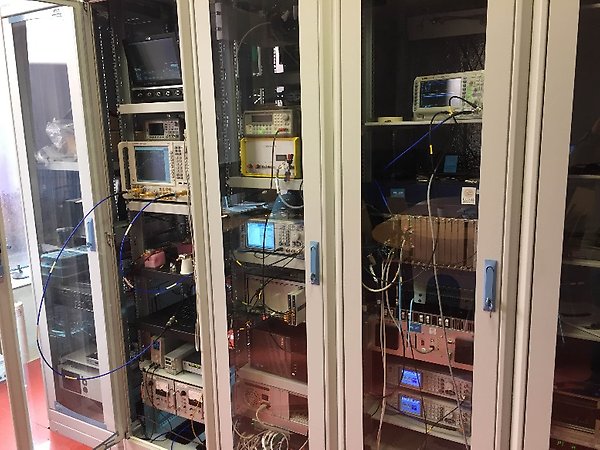Control System Development
There are a number of subsystems in the FREIA Laboratory that need to be controlled or supervised. Most of them have a local control system supplied by the vendor of the equipment but nevertheless there are several advantages in having a common control system:
- Uniform operator’s interface to all equipment in the control room
- Common services like data logging, alarm manager, electronic logbooks
- Remote access
The control system used at FREIA is based on EPICS. “EPICS is a set of Open Source software tools, libraries and applications developed collaboratively and used worldwide to create distributed soft real-time control systems for scientific instruments such as particle accelerators, telescopes and other large scientific experiments.”

The following subsystems are controlled from EPICS:
- Linde helium liquefaction facility
- Horizontal cryostat (HNOSS)
- High power RF amplifiers (DB Elettronica, Itelco Electrosys)
- Sub-atmospheric He pumps
- Radiation monitoring and protection system
- Low Level RF (LLRF) system
- Fast and slow interlocks
- Deionized water cooling system
- Vacuum system

Technical means
There is a diversity of hardware used in the different subsystems ranging from vendor specific solutions to general purpose PLCs (Programmable Logic controllers) and high performance FPGA systems.
For the tests performed at FREIA we use laboratory instruments like oscilloscopes, spectrum analyzers, vector network analyzers, fast digitizers and others. The automatic tests procedures are usually programmed in LabVIEW or MatLab.
We have two Low Level Radio Frequency (LLRF) control systems:
- An MTCA based system from Lund University that is a first prototype for the ESS’s LLRF control system
- National Instrument PXIe based system developed at FREIA, programmed in LabVIEW that acts also as a fast data acquisition system (10 channels, 250 Ms/s, input bandwidth 800 Mhz)
The fast interlock system that controls the RF switches cutting off the input signal to the 350 kW RF stations is built on the NI cRIO-9024 platform. In the current version it supports up to 32 digital inputs and 16 analog channels (100 kHz) with programmable thresholds. Up to 300 000 data points in each analog channel are written to the circular buffer for post mortem analysis.
The slow interlock system is based on Siemens S7-300 PLC. The current system support about 100 i/o channels but there is still room for expansion of the system if needed.
Achievements
- All subsystems controllable via EPICS
- Centralized data logger
- Alarm manager
Technical expertise
- EPICS integration
- LLRF controls
- LabVIEW (Real time, FPGA)
- PLC programming
System Coordinator: Konrad Gajewski
Contact
- Head of Division FREIA
- Maja Olvegård
- Facility manager
- Rocio Santiago Kern
